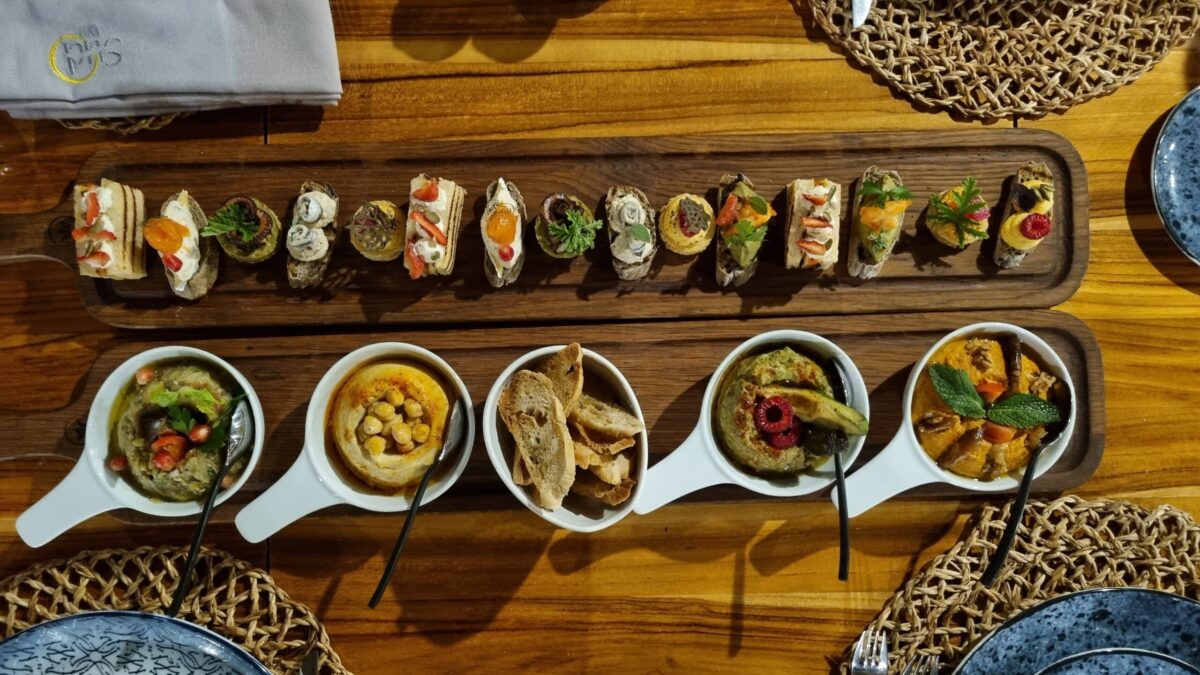
Moroccan cuisine is a delightful fusion of flavors influenced by various cultures, including Berber, Arab, Mediterranean, and African culinary traditions. Dishes like tagine, couscous, pastilla, and harira soup are just a few examples of Morocco’s diverse and delicious cuisine.
If you’re interested in exploring Moroccan culinary traditions, you might consider visiting cooking schools, culinary tours, or food markets in cities like Marrakech, Fes, or Casablanca. These places offer opportunities to learn about Moroccan ingredients, cooking techniques, and the cultural significance of different dishes.
Moroccan tea
In Morocco, everything begins with a cup of tea. Moroccan (mint) tea is an integral part of Moroccan culture and hospitality. It’s not just a beverage but a symbol of friendship, hospitality, and tradition. It is typically made with powdered green tea, fresh mint leaves, and sugar. The tea leaves are rinsed with hot water to remove any bitterness. Then, they are brewed in boiling water along with a generous amount of fresh mint leaves and sugar. The tea is simmered for a few minutes to infuse the flavors fully. Moroccan tea is traditionally served in small, decorative glasses with intricate designs. The tea is poured from a height, creating a frothy layer on top. This pouring process, known as “high pouring” or “grandpa style,” helps aerate the tea and mixes the flavors. Offering tea to guests is an important aspect of Moroccan hospitality. It’s a way to welcome visitors into one’s home and show appreciation for their company. The tea-making process can be elaborate and time-consuming, but it’s considered a labor of love and a demonstration of respect for guests.
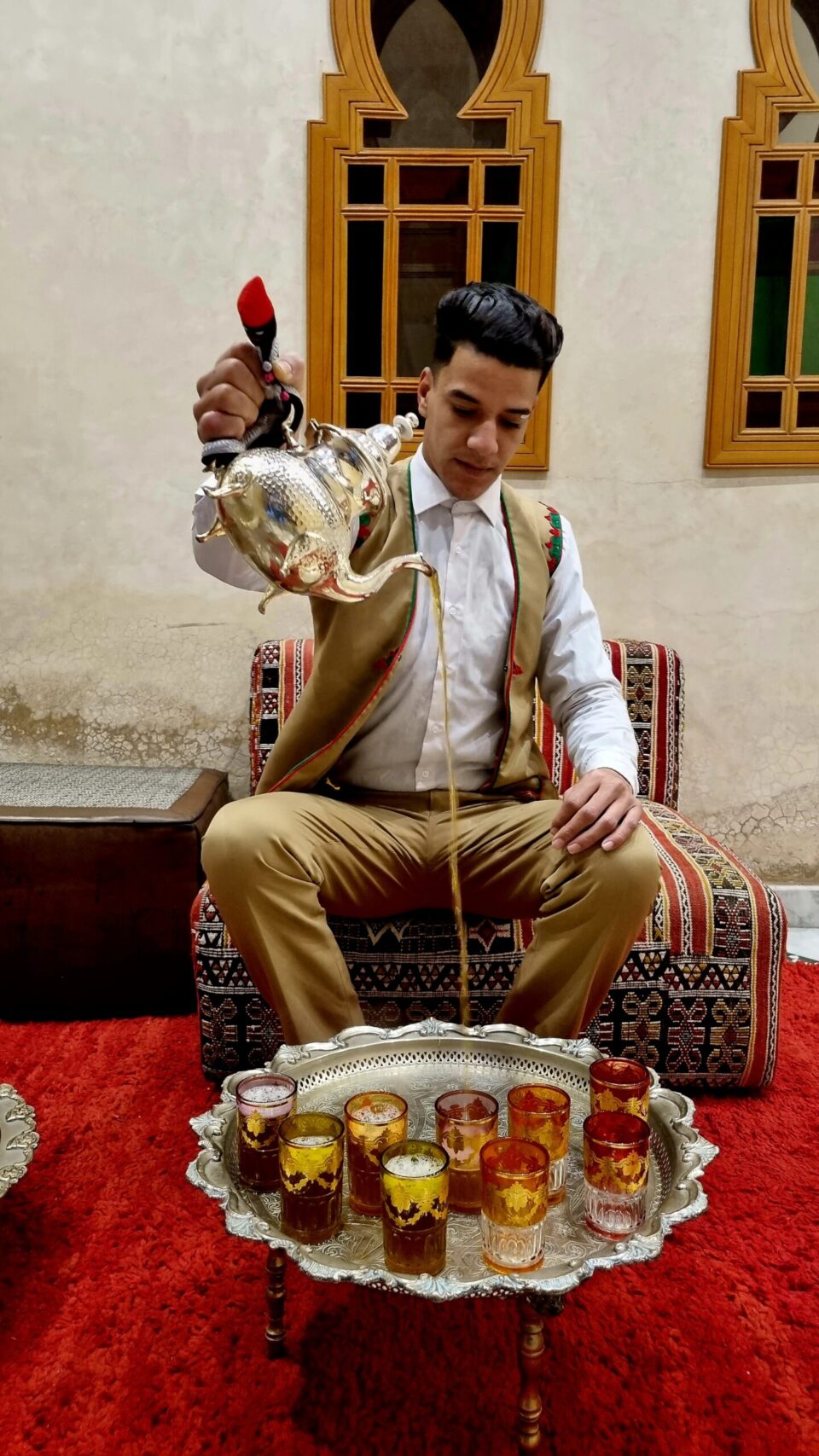
Moroccan tea has symbolic meanings ingrained in Moroccan culture. The combination of bitter tea leaves, sweet sugar, and refreshing mint is said to represent the bittersweet nature of life. The act of pouring tea is seen as a gesture of generosity and warmth.
Moroccan tea has symbolic meanings ingrained in Moroccan culture
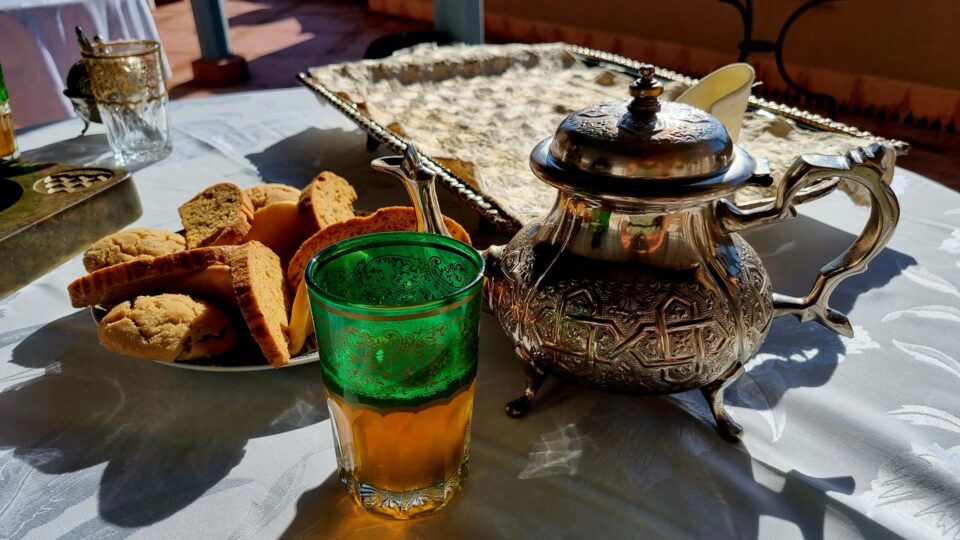
Moroccan Culinary Arts Museum
In the medina, with its rammed earth (pisé) walls, streets, and alleys, you are invited to lose yourself and to push open the doors of dwellings hidden behind high walls. Once you have entered the Moroccan culinary museum, you will find yourself in a refuge that will make you forget the sound and heat of the outside world.
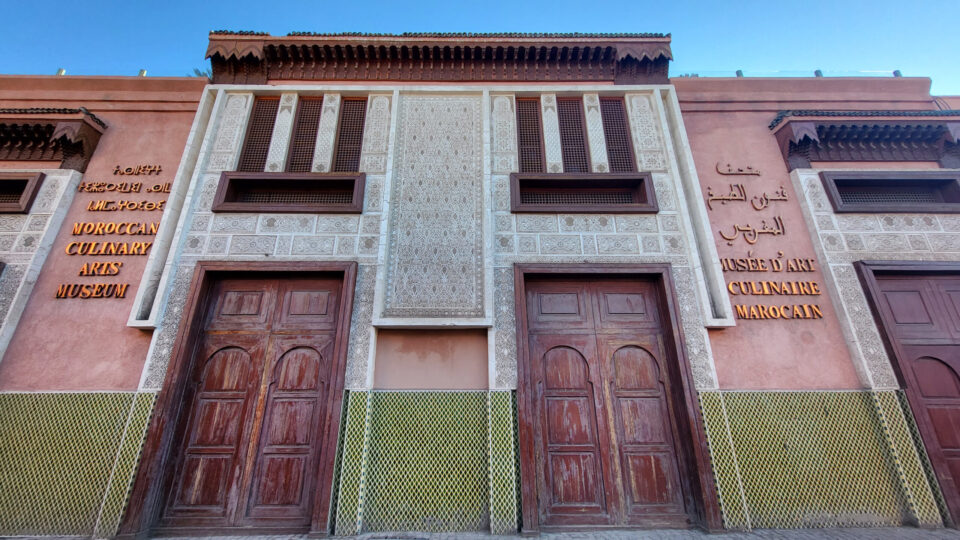
This 18th-century palace, which belonged to a Marrakesh notable, has two interior courtyards or patios, paved with zellige (enameled terracotta mosaic tiles) with ornate decorative friezes and columns. The center of the first courtyard is embellished with a Carrara marble fountain framed by four olive trees and two sumptuous salons with ceilings more than sixteen feet high. This palace was renovated with top-quality workmanship without changing its character and preserving its profusion of zellige, sculpted plaster, and cedar wood hand-painted in the zouaké style.
Throughout its rooms, visitors will discover the richness of Moroccan cuisine by circulating through several rooms dedicated to its emblematic dishes and ingredients. Nothing will escape: colorful spices and surprising herbs, Moroccan salads, vegetable soups, traditional briouates and pastillas, essential tagines (tajin) and couscous but also Mediterranean Jewish cuisine, bread, pastries, and tea.

You will know everything about the flavors, recipes, influences and history of the legendary dishes of Morocco that make it internationally famous!
You will know everything about the flavors, recipes, influences, and history of the legendary dishes of Morocco that make it internationally famous
The making of argan oil, the cooking of tafarnout bread, the delicate art of rolling semolina for couscous… Moroccan cuisine will no longer have any secrets for you. Even tableware will be represented.
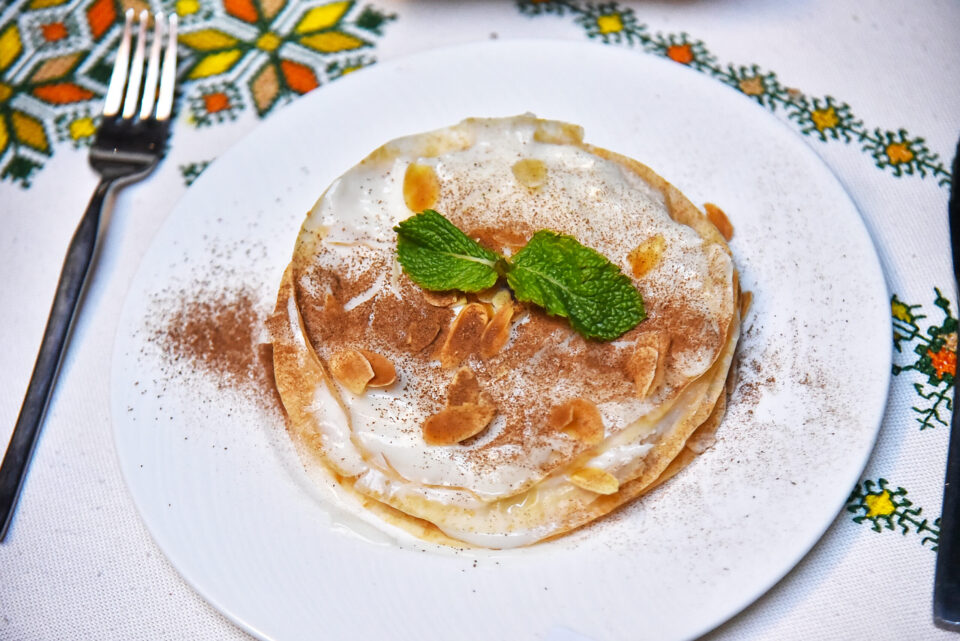
Tajin
Tajin (also spelled “tagine”) is a traditional North African dish named after the earthenware pot in which it is cooked. It is popular in Morocco, Algeria, Tunisia, and other countries in the region. The dish typically consists of slow-cooked savory stews, combining meat (such as lamb, chicken, or beef) or fish with various vegetables, fruits, and aromatic spices.
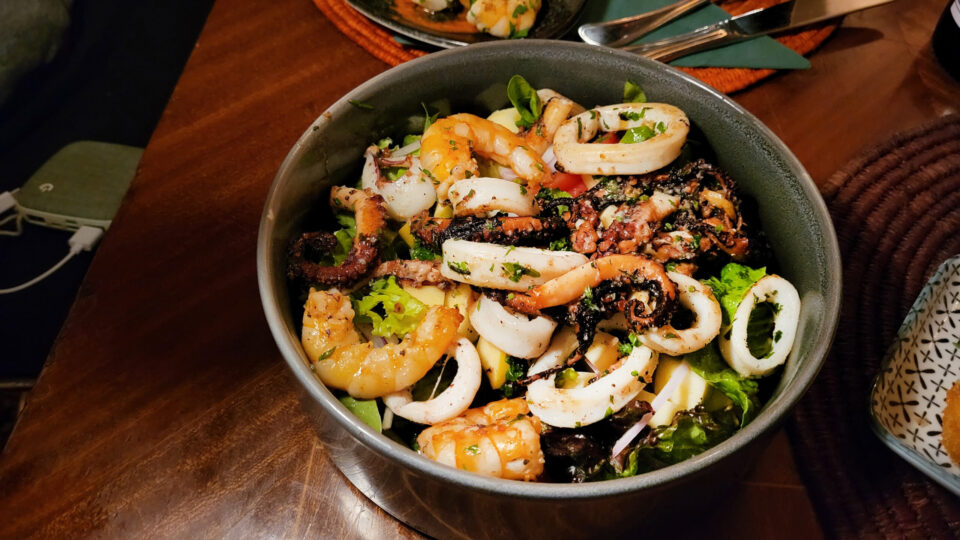
The distinctive conical shape of the tajine pot helps to circulate moisture and flavors, resulting in tender, flavorful dishes. Tajines can be prepared in a myriad of ways, with ingredients varying based on regional preferences and seasonal availability. Common ingredients used in tajines include onions, tomatoes, garlic, olives, preserved lemons, and a blend of cumin, coriander, saffron, and cinnamon.
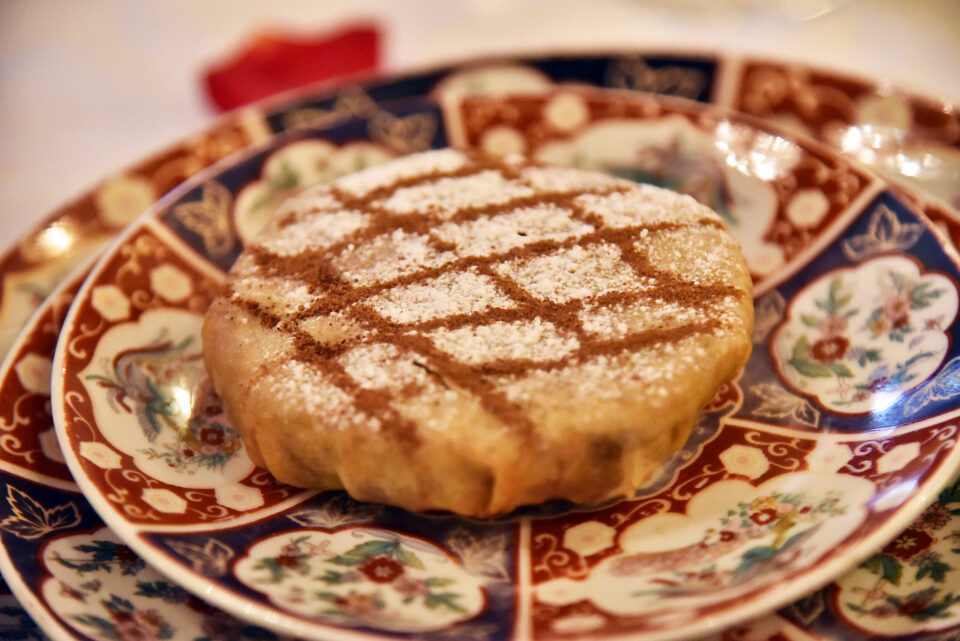
Tajines are often served with bread, couscous, or rice to soak up the flavorful sauce. They are a central part of Moroccan cuisine and are enjoyed in homes, restaurants, and street stalls throughout the country. The slow-cooking method used in preparing tajines allows for the flavors to meld together, resulting in a hearty and comforting meal that locals and visitors love.
Street food
Moroccan street food is a vibrant and integral part of the country’s culinary culture. It offers a diverse array of flavors, spices, and textures, often reflecting the rich tapestry of Moroccan cuisine. Mechoui refers to slow-roasted lamb or goat cooked over an open fire or in a pit. The meat is seasoned with a blend of spices such as cumin, paprika, and coriander, resulting in tender and flavorful meat. Mechoui is often served with bread and harissa sauce. Harira is a hearty and nutritious soup commonly enjoyed during Ramadan to break the fast. It typically contains a base of tomatoes, lentils, chickpeas, and onions, flavored with herbs and spices like cilantro, parsley, ginger, and cinnamon. Harira is often served with dates and chebakia (honey-soaked pastries).
The distinctive conical shape of the tajine pot helps to circulate moisture and flavors
Bissara is a traditional Moroccan soup made from dried split fava beans seasoned with garlic, olive oil, cumin, and paprika. It’s often served hot, garnished with olive oil, cumin, and sometimes chopped cilantro. Bissara is a popular breakfast option, especially during the winter months. Msemen is a square-shaped Moroccan pancake made from semolina flour, yeast, and water. It’s typically fried on a griddle until crispy on the outside and soft on the inside, often served with honey or jam. Beghrir, also known as Moroccan “thousand-hole pancakes,” are spongy pancakes made from semolina flour and served with butter and honey.
Morocco’s coastal cities are known for their fresh seafood, and sardine sandwiches are a popular street food option. Grilled sardines are often stuffed into a crusty baguette and seasoned with a squeeze of lemon juice, cumin, and harissa for a spicy kick. Babbouche is a traditional Moroccan street food made from small land snails cooked in a flavorful broth infused with herbs and spices like garlic, cumin, and ginger. It’s often served hot and seasoned with harissa or chili paste. Grilled meat skewers, known as brochettes, are a popular street food option in Morocco. They can include various types of meat, such as lamb, beef, chicken, or even liver, seasoned with a blend of spices and grilled to perfection over charcoal. Along the coastal regions, you’ll find vendors selling freshly fried fish, often served with a side of crispy fries or bread. The fish is typically seasoned with a spice blend and fried until golden and crispy.
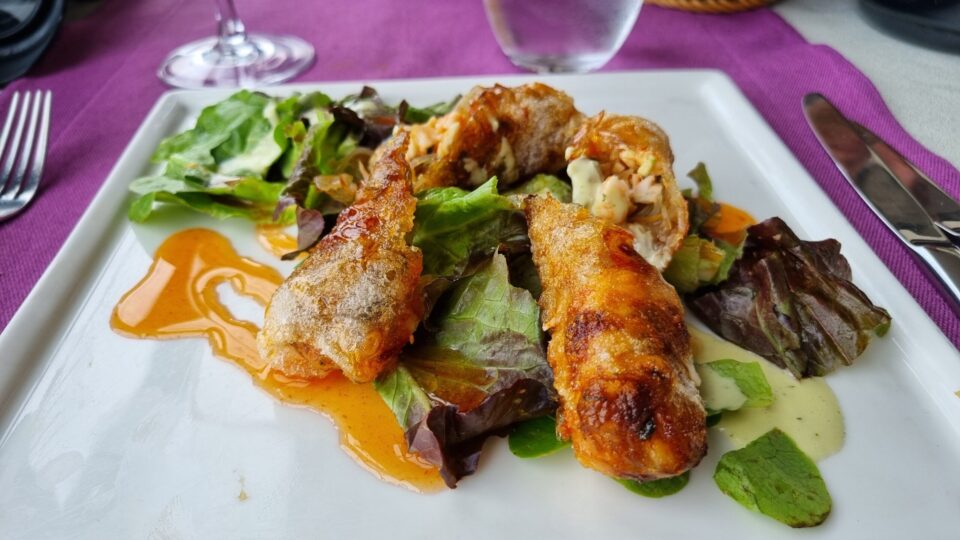
Tajin recipe
Ingredients:
1 whole chicken, cut into pieces
2 onions, finely chopped
2-3 cloves of garlic, minced
2 tomatoes, chopped
1 preserved lemon, cut into quarters (optional)
1 handful of green olives
2 tablespoons olive oil
1 teaspoon ground ginger
1 teaspoon ground cumin
1 teaspoon paprika
1 teaspoon ground turmeric
Salt and pepper to taste
Fresh cilantro or parsley for garnish
Water
Instructions:
Heat the olive oil in a tajine pot or a large skillet over medium heat. Add the chopped onions and minced garlic to the pot and cook until softened and lightly browned. Add the chicken pieces to the pot and brown them on all sides. Once the chicken is browned, add the chopped tomatoes, preserved lemon (if using), and green olives to the pot. Sprinkle the ground ginger, cumin, paprika, turmeric, salt, and pepper over the chicken and vegetables. Pour enough water into the pot to cover the chicken halfway. Cover the tajine pot with its lid or use aluminum foil if using a skillet, and let the chicken simmer over low heat for about 45 minutes to 1 hour, or until the chicken is cooked through and tender. Check the seasoning and adjust if necessary. Garnish the chicken tajine with fresh cilantro or parsley before serving. Serve the chicken tajine hot with couscous, bread, or rice.
Enjoy your homemade Chicken Tajine! Feel free to adjust the ingredients and spices according to your taste preferences.